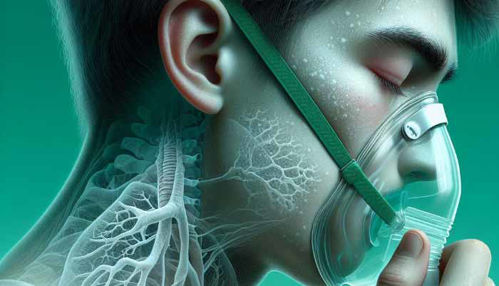Ureteritis je okužba enega ali obeh sečevodov - cevk, po katerih teče seč iz ledvic v sečni mehur.
PIELONEFRITIS: Splošno | Simptomi | Diagnoza | Zdravljenje | Uretritis | Vprašanja in odgovori | Viri/reference
Pielonefritis najpogosteje nastane zaradi širjenja okužbe iz ledvic ali sečnega mehurja. Povzroči ga lahko upočasnjen sečni tok zaradi motenj oživčenja dela sečevodov.
Zdraviti je treba okužbo ledvic in sečnega mehurja. Dele sečevodov s slabšim delovanjem lahko kirurško odstranimo.
Slika: Simptomi ledvične okužbe so diagnostično značilni.
.jpg)
Escherichia coli, ki živi običajno v debelem črevesju, povzroča okužbo ledvic pri 90 odstotkih doma zbolelih bolnikov in le pri 50 odstotkih bolnišničnih. Okužba se največkrat širi iz predela spolovil v sečni mehur. Možnost okužbe navadno preprečujeta sečni tok, s katerim se izpirajo povzročitelji okužbe, in zapiranje sečevodnih mišic zapiralk na vstopu v sečni mehur.
Verjetnost okužbe sečil povečuje vsakršna zapora sečnega toka. Najpogosteje nastane zaradi ledvičnih kamnov ali povečane prostate. Ledvično okužbo lahko povzroči prenos povzročitelja iz krvi. Tako se lahko npr. stafilokokna kožna okužba prek krvi razširi v ledvice. Drugi dejavniki, ki povečujejo tveganje za okužbo ledvic, so nosečnost, sladkorna bolezen in oslabljen imunski sistem.
Simptomi
Simptomi ledvične okužbe nastanejo nenadoma. Pojavijo se mrzlica, zvišana telesna temperatura, ledvena bolečina, slabost in bruhanje. Približno tretjina bolnikov z ledvično okužbo ima simptome okužbe spodnjih sečil, med njimi pogosto bolečine med mokrenjem. Ena ali obe ledvici se lahko povečata in postaneta občutljivi. Bolniki čutijo bolečine običajno v ledvenem predelu na strani bolne ledvice. Včasih se trebušne mišice močno napnejo. Bolnik lahko čuti nenadne hude bolečine, ki jih povzroči spazem enega od sečevodov (ledvična kolika).
Video vsebina: Kronični pielonefritis - patologija.

Spazme povzročajo draženje ob okužbi ali ledvični kamni. Pri otrocih simptome ledvične okužbe teže prepoznamo, ker so navadno blagi. Pri dolgotrajni okužbi (kroničnem pielonefritisu) je bolečina težko opredeljiva, telesna temperatura je lahko zvišana ali celo normalna. Kronični pielonefritis nastane pri ljudeh z okvarami sečil, kot so zapora sečnega toka, ledvični kamni, pri otrocih pa najpogosteje zaradi zatekanja seča iz sečnega mehurja v sečevoda. Kronični pielonefritis lahko okvari delovanje ledvic, ki lahko popolnoma odpovedo.
Diagnoza
Simptomi ledvične okužbe so diagnostično značilni. Zdravnik jih potrdi z mikroskopskim pregledom vzorca seča in urinokulturo, s katero ugotavlja prisotnost bakterij v seču.
Dodatne preiskave so potrebne, če imajo bolniki hudo ledveno bolečino zaradi ledvične kolike, če antibiotično zdravljenje v 48 urah ni učinkovito, če se ponovijo simptomi kmalu po končanem jemanju antibiotikov, in pri moških, ker ti sicer redkokdaj obolevajo za okužbo ledvic. Ultrazvočna ali rentgenska preiskava lahko odkrijeta ledvične kamne, strukturne nepravilnosti ali druge vzroke zapore sečnega toka.
Zdravljenje
Pri sumu na ledvično okužbo mora bolnik oddati seč in kri za laboratorijske preiskave, nato mu zdravnik predpiše antibiotično zdravljenje. Izbira in odmerek zdravila sta odvisna od laboratorijskih izvidov. Antibiotično zdravljenje ledvične okužbe traja navadno dva tedna, za moške, katerim okužbo teže pozdravimo, pa celo 6 tednov. Dva do šest tednov po končanem antibiotičnem zdravljenju je treba ponovno preiskati vzorec seča in se prepričati, ali je okužba ozdravljena.
Slika: Okužbe sečil lahko povzročijo bakterije, virusi, glive in različni paraziti.
.jpg)
Kadar preiskave odkrijejo zaporo sečnega strukturne nenormalnosti je včasih potreben urološki poseg. Osebe s ponavljajočo se okužbo sečil in pri katerih se ponovi kmalu po končanem antibiotičnem zdravljenju, je priporočljivo preventivno jemanje majhnega odmerka antibiotika vsak dan. Kako dolgo naj takšno zdravljenje traja, ni dokončno opredeljeno, navadno ga po enem letu prekinejo. Če se kljub temu okužba ponovi, lahko s preventivnim zdravljenjem nadaljujejo tudi dlje.
Zdravi ljudje v seču nimajo bakterij niti drugih povzročiteljev bolezni. Seč v sečnem mehurju je sterilen. V sečnici (uretri), cevki, po kateri iz mehurja izteka seč, bakterij ni ali jih je premalo, da bi povzročile bolezen. Kljub temu se lahko okužba pojavi kjerkoli v sečilih. Običajno jo opredelimo kot okužbo zgornjih ali spodnjih sečil. Spodnja sečila sestavljata sečnica in sečni mehur, zgornja pa ledvice in dva sečevoda (ureterja).
Okužba sečil nastane na dva načina. Najpogosteje se pojavi tako, da mikroorganizmi pridejo v sečila skozi njihov spodnji del - pri moških skozi odprtino sečnice v spolnem udu, pri ženskah skozi odprtino sečnice med sramnimi ustnicami. Okužba se nato po sečnici navzgor razširi v druge dele sečil. Redkeje nastane okužba sečil zaradi širjenja mikroorganizmov po krvi. V tem primeru so najpogosteje prizadete ledvice.
Okužbe sečil lahko povzročijo bakterije, virusi, glive in različni paraziti. Zdravi ljudje v seču nimajo bakterij niti drugih povzročiteljev bolezni. Seč v sečnem mehurju je sterilen. V sečnici (uretri), cevki, po kateri iz mehurja izteka seč, bakterij ni ali jih je premalo, da bi povzročile bolezen. Kljub temu se lahko okužba pojavi kjerkoli v sečilih. Običajno jo opredelimo kot okužbo zgornjih ali spodnjih sečil. Spodnja sečila sestavljata sečnica in sečni mehur, zgornja pa ledvice in dva sečevoda (ureterja).
Okužba sečil nastane na dva načina. Najpogosteje se pojavi tako, da mikroorganizmi pridejo v sečila skozi njihov spodnji del - pri moških skozi odprtino sečnice v spolnem udu, pri ženskah skozi odprtino sečnice med sramnimi ustnicami. Okužba se nato po sečnici navzgor razširi v druge dele sečil. Redkeje nastane okužba sečil zaradi širjenja mikroorganizmov po krvi. V tem primeru so najpogosteje prizadete ledvice.
Okužbe sečil lahko povzročijo bakterije, virusi, glive in različni paraziti. Številni paraziti, med njimi npr. gliste, lahko okužijo sečila. Malarija je bolezen, ki jo povzroči praživalski parazit. Prenašajo ga komarji. Zamaši lahko ledvične žile ali povzroči nenaden razpad rdečih krvnih celic Molizo), kar vodi v akutno ledvično odpoved.
Video vsebina: Akutni pielonefritis (okužba sečil) - vzroki, simptomi in patologija.

Trihomoniaza je spolno prenosna bolezen. Znak bolezni je vlecljiv, zelenorumen penast izcedek iz nožnice. Okužba se redkokdaj razširi v sečni mehur. Trihomoniazo pri okuženih moških redkokdaj spremljajo simptomi, lahko pa povzroči vnetje prostate (prostatitis).
Shistosomiaza je okužba s črvom, ki lahko prizadene ledvice, sečevoda in sečni mehur. Bolezen pogosto povzroči akutno ledvično odpoved pri prebivalcih Egipta in Brazilije. Zaradi kronične okužbe sečnega mehurja se lahko pojavi rak na sečnem mehurju. Filiriaza je okužba s trihino, ki zamaši limfne žile. V seču se izloča limfa (chyluria). Spodnji udi in mošnja (skrotum) so zaradi filiriaze močno otekli (elefantiaza).
Uretritis
Uretritis je okužba sečnice (uretre), skozi katero izločamo seč iz mehurja. Uretritis povzročajo bakterije, glive ali virusi. Okužbo sečnice pri ženskah običajno povzročijo mikroorganizmi, ki se iz spodnjih prebavil in okolice zadnjika naselijo nožnico, nato pa še v sečnico. Pri moških je uretritis redkejši.
Slika: Pri moških je uretritis redkejši.
.jpg)
Spolno prenosljive klice, kot je Neisseria gonorrhoeae, povzročiteljica gonoreje, vnese v nožnico med spolnim odnosom moški z okuženim spolnim udom. Uretritis pri moških najpogosteje nastane zaradi gonokokne okužbe. Pri ženskah gonokoki povzročijo okužbo nožnice, materničnega vratu, maternice, jajčnikov in jajcevodov, redkeje uretritis. Tudi klamidija in virus herpesa simpleksa povzročata uretritis in se prenašata s spolnimi odnosi.
Vprašanja in odgovori
Zakaj nastane pielonefritis?
Pielonefritis se pojavi kot zaplet ascendentne okužbe sečil, ki se iz mehurja razširi na ledvice in njihove zbiralne sisteme[1].
Ali je pielonefritis spolno prenosljiva bolezen?
Ne, pielonefritis ni spolno prenosljiva bolezen, vendar je povezan s spolno aktivnostjo[2].
Ali je pielonefritis kronično stanje?
Kronični pielonefritis je dolgotrajna piogena okužba ledvic, ki se pojavi skoraj izključno pri bolnikih z večjimi anatomskimi nepravilnostmi. Simptomi so lahko odsotni ali pa vključujejo zvišano telesno temperaturo, slabo počutje in bolečine v boku[3].
Kaj je najbolj pogost vzrok za pojav pielonefritisa?
Glavni povzročitelj akutnega pielonefritisa so gramnegativne bakterije, najpogostejša pa je Escherichia coli. Druge gramnegativne bakterije, ki povzročajo akutni pielonefritis, so Proteus, Klebsiella in Enterobacter[4].
Ali se pojav okužbe sečil poveča s spolno aktivnostjo?
Večina okužb sečil je posledica bakterije Escherichia coli, vendar ste med okužbo bolj dovzetni za nove vire bakterij. Spolni odnos lahko poveča te možnosti za novo bakterijsko okužbo[5].
Kdo najpogosteje dobi uretritis?
Uretritis je najpogostejši pri moških, starih od 15 do 35 let. Lahko ga povzročijo spolno prenosljive okužbe, kot sta gonoreja in klamidija[6].
Viri in reference
Veliki zdravstveni priročnik za domačo uporabo, Založba mladinska knjiga
- Acute Pyelonephritis - https://pubmed.ncbi.nlm.nih.gov
- Pyelonephritis: Kidney Infection - https://www.tena.co.nz
- Chronic Pyelonephritis - https://www.msdmanuals.com
- Acute Pyelonephritis - https://www.ncbi.nlm.nih.gov
- What is the Link Between Urinary Tract Infections and Sex? - https://www.byramhealthcare.com
- Urethritis in Men - https://www.aafp.org








 Facebook
Facebook
 Instagram
Instagram
 info@moja-lekarna.com
info@moja-lekarna.com

